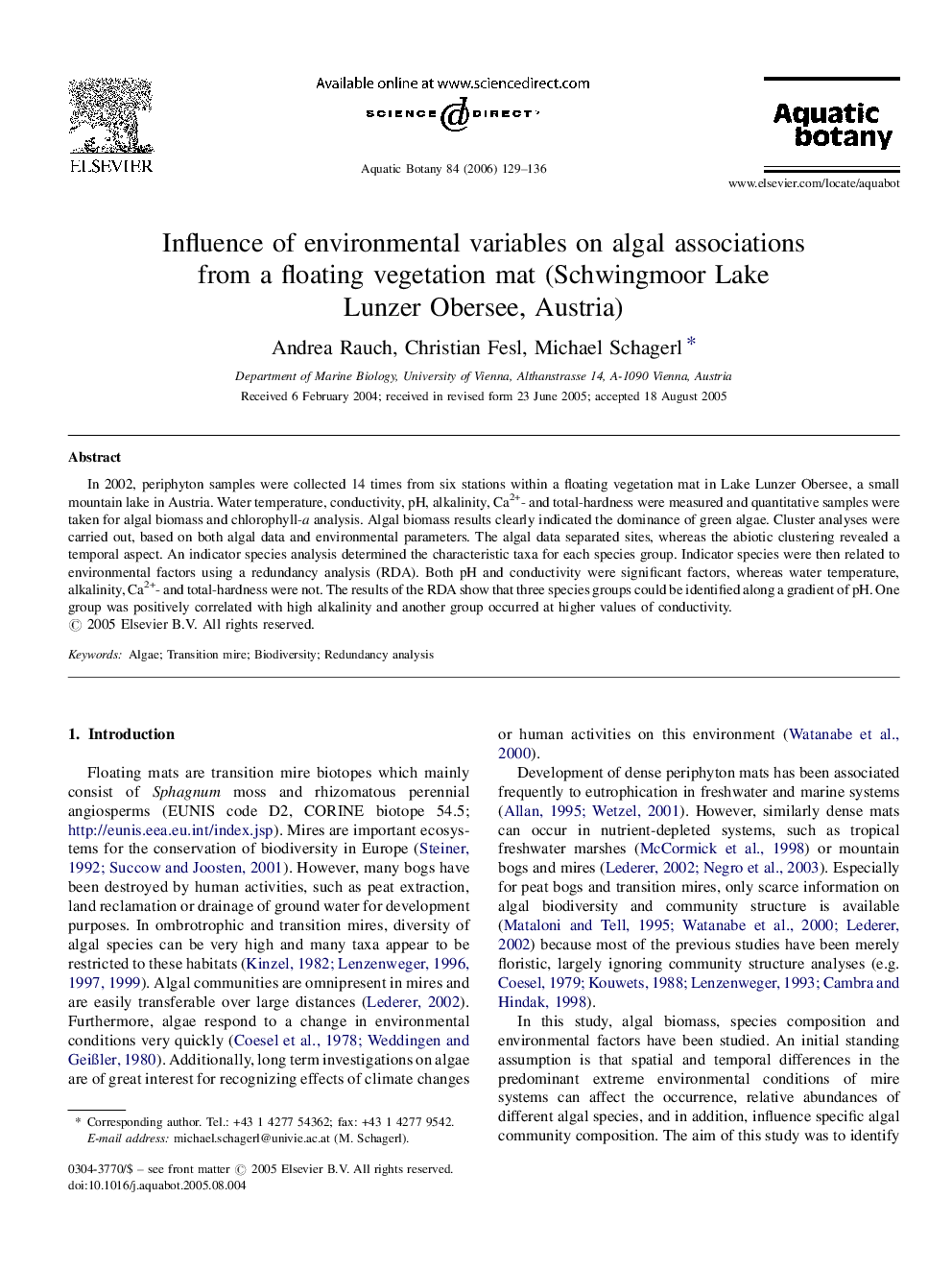| Article ID | Journal | Published Year | Pages | File Type |
|---|---|---|---|---|
| 4528705 | Aquatic Botany | 2006 | 8 Pages |
Abstract
In 2002, periphyton samples were collected 14 times from six stations within a floating vegetation mat in Lake Lunzer Obersee, a small mountain lake in Austria. Water temperature, conductivity, pH, alkalinity, Ca2+- and total-hardness were measured and quantitative samples were taken for algal biomass and chlorophyll-a analysis. Algal biomass results clearly indicated the dominance of green algae. Cluster analyses were carried out, based on both algal data and environmental parameters. The algal data separated sites, whereas the abiotic clustering revealed a temporal aspect. An indicator species analysis determined the characteristic taxa for each species group. Indicator species were then related to environmental factors using a redundancy analysis (RDA). Both pH and conductivity were significant factors, whereas water temperature, alkalinity, Ca2+- and total-hardness were not. The results of the RDA show that three species groups could be identified along a gradient of pH. One group was positively correlated with high alkalinity and another group occurred at higher values of conductivity.
Keywords
Related Topics
Life Sciences
Agricultural and Biological Sciences
Aquatic Science
Authors
Andrea Rauch, Christian Fesl, Michael Schagerl,
